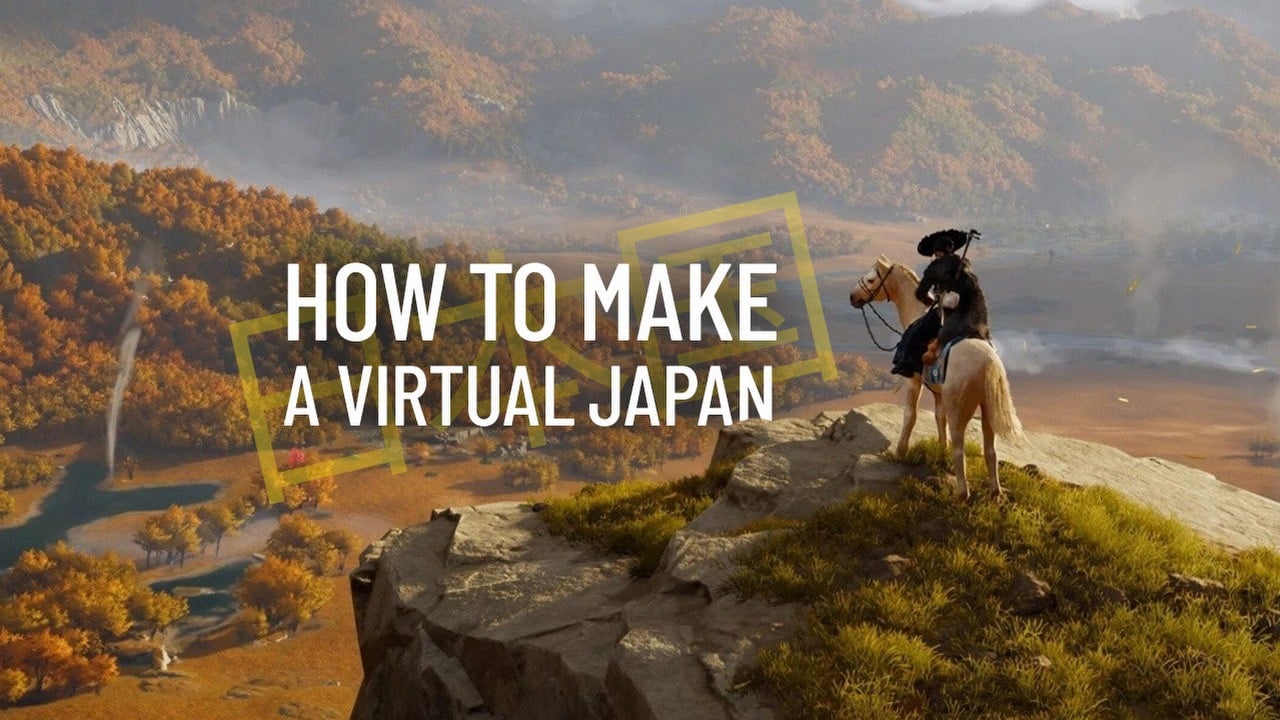
Sucker Punch Productions’ newest game is receiving rave reviews, and many are saying it’s as good as, or even better than, their acclaimed 2020 title, *Ghost of Tsushima*. I recently had a great conversation with Jason Connell, the Creative Director of *Ghost of Yotei*, for nearly thirty minutes. We discussed the studio’s decision to create a new main character and setting. Read on to learn more!
- Ghost of Yotei review: Majesty among vengeance
Maciej Bogusz asked why the game is set in Hokkaido (known as Ezo within the game) and why the story takes place 300 years after the events of Jin Sakai’s story.
When we started thinking about where to set our next game after *Ghost of Tsushima*, it was a tough ask! We needed a place that was gorgeous, had a lot of different environments – mountains, beaches, cool historical spots – and felt fresh for players to explore. We landed on Hokkaido, in Japan, and wow, it’s stunning. It’s got everything from huge, snowy mountains like Mount Yotei to beautiful beaches, plus some really interesting castles and landmarks. It’s just so vast and captivating. We were also inspired by the movie *Unforgiven* (the Japanese remake), which was filmed there. It really captured this raw, dangerous feel that we’re aiming for. Plus, honestly, I couldn’t think of any other open-world games that have really explored Hokkaido, so that made it even more exciting for us.
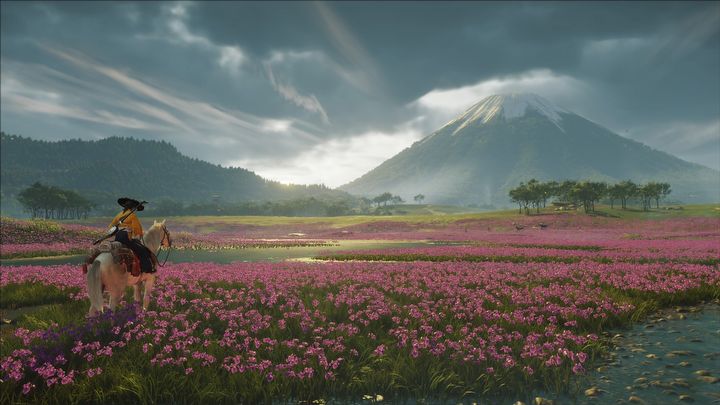
We chose the time period right after the Battle of Sekigahara because we enjoy creating backstories. We wanted to develop a new character and story that truly captured the feel of its setting. This led us to Hokkaido during the early Edo period, a time of significant change that shaped how the region was seen and even named. We envisioned Hokkaido – then known as Ezo – as a remote, natural landscape, sometimes depicted as dangerous. We loved the idea of combining this wild, beautiful scenery – comparable to the island of Tsushima – with a story of revenge, where the player hunts enemies amidst stunning, rugged terrain. It felt like a perfect fit.
It definitely feels like the Wild West, doesn’t it? But going back to your last game, the ending left a lot of possibilities open for continuing Jin Sakai’s story. So why the decision to move on to a new time period and a new main character? Do you feel Jin’s story has run its course?
You know, I think it’s totally true that we, as creators, *love* doing origin stories. It’s just so much fun for us to build those beginnings, and for players, it’s awesome to learn who a character is and then see them evolve – whether they’re broken down, changed completely, or just grow as people. Maybe it’s a little bit of all three, honestly!
Since the game features a ghost, we naturally started exploring what that meant. We discovered the Japanese folk tale of the Onryo – spirits, often women, who return to seek revenge after being mistreated in life. This story felt particularly fitting for the game’s isolated and rugged setting, and we thought it would be compelling to bring that sense of haunting to life. With the character Atsu, we initially focused on a classic revenge story, but ultimately shaped her journey to be about the long process of healing after a deeply traumatic experience. We envisioned her as a solitary figure searching for connection and a sense of belonging – a lone wolf finding its pack.
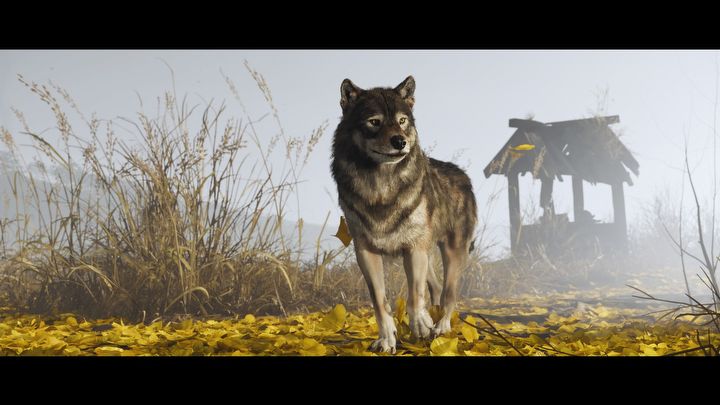
It’s clear the game involved a lot of research. Can you describe how that research was conducted?
When developing *Ghost of Tsushima*, we realized game development requires a broader team than we were used to on games like *Infamous*. Previously, our teams were primarily animators, artists, and designers – technical experts. But *Ghost of Tsushima* demanded expertise beyond that. We needed consultants to ensure authentic cultural representation – things like proper body language, respectful depictions of religion (Buddhism and Shinto), and accurate historical context. We started incorporating specialists to advise on these nuanced areas. While we had some cultural consultants on our second game, we significantly expanded this approach for *Ghost of Tsushima*. For example, recognizing the importance of the Ainu people in Hokkaido, we traveled there to meet with the Ainu community and work with a consultant who could help us portray their lives and cultural impact accurately. Our goal was to create a thoughtful and meaningful experience, while still delivering an entertaining game.
In *Ghost of Yotei*, the developers intentionally removed question marks from the map, giving players a greater sense of freedom. I think that’s fantastic, and it’s a significant departure from how *Ghost of Tsushima* handled exploration. I’m curious to know what led to that design choice.
I really enjoy open-world games where you’re free to explore and decide what to do on your own. In Ghost of Tsushima, we didn’t quite achieve that level of freedom. We aimed to create a game that appeals to both players who love a strong story and those who prefer open-world exploration, and finding the right balance between those two is incredibly challenging. Sometimes the story and the freedom to explore clashed, and those clashes could be quite noticeable.
In *Ghost of Yotei*, we wanted to create a more immersive experience, so we removed elements that could break your connection to the world – like a large in-game journal. While the journal in *Tsushima* was helpful and detailed, we felt we didn’t need that this time. Instead of relying on a journal or map markers, we’re using beautifully illustrated cards drawn by the character Atsu to hint at points of interest. These cards offer subtle clues about what you might find, encouraging exploration and letting you discover things organically. It’s up to you to decide if you want to investigate, and the cards provide just enough information to point you in the right direction, enhancing the feeling of a truly open world.
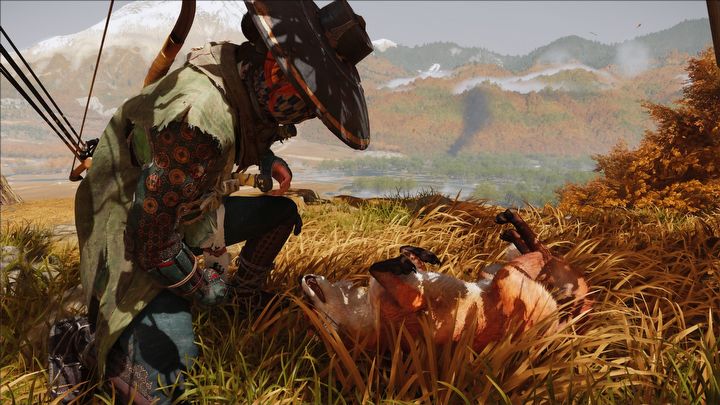
We openly support players who prefer to follow the main story directly. We’ve designed the game with clear guides – like quest markers, a detailed journal, topic cards, and campfires – to make tracking the main quests simple. This is because we want to offer a truly immersive and free-flowing experience for those who enjoy playing that way.
MB asked about the map’s artwork. He noted that Atsu paints the cards and clues directly onto the map and wondered if the artists found it to be a challenging task. He wanted to hear more about the process.
The map in *Ghost of Tsushima* is visually stunning, and the team did a fantastic job creating it. However, it wasn’t intended to feel like a precise, detailed map. Instead, it’s a beautiful way to represent the world through the eyes of a character named Atsu. We decided the map is actually made up of her drawings – her personal interpretation of the island. The collectible cards also give you a glimpse into her thoughts and feelings. We learned from our previous game that more visually interesting icons are easier to remember, so we wanted to go beyond just making the map memorable. We wanted it to feel like Atsu’s personal map, a reflection of how *she* sees the world.
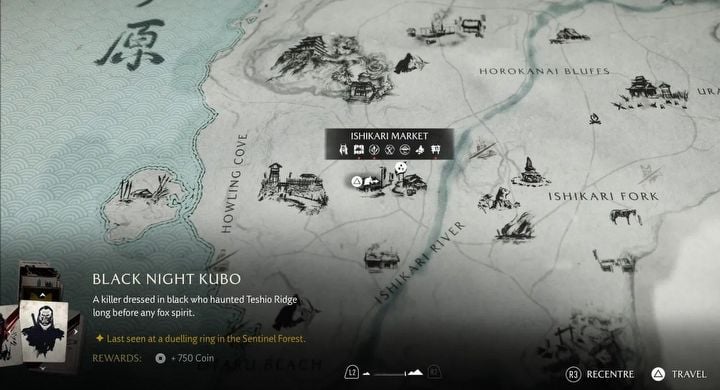
MB: Atsu’s fighting style is distinct from Jin’s. She doesn’t fight like a traditional samurai. Was there a particular reason you chose that direction for her?
We really liked the combat system in *Ghost of Tsushima* and wanted to keep that feel, but we also wanted Atsu’s fighting style to reflect her character. Atsu has always had to adapt, since she lost her childhood. This translates to how she fights – she’s resourceful and uses whatever is available. She might start with a sword, but if someone teaches her to use a spear, she’ll quickly incorporate it. She’ll grab any weapon she can find, even throw it, and if she’s disarmed, she’ll scramble to find another. Unlike the main character in *Tsushima*, who is bound by a strict code, Atsu is much more flexible. The story allows her to fight however she needs to, even using fear or firearms. Everything she does in combat is driven by her desire for revenge against those who harmed her family.
Honestly, making this game was a blast! It felt like I was pouring all my love for video games, samurai films, and anime into it. Every little detail was a tribute to the things I grew up with, and it was just a really fun project to work on.
The game now features two new audio-visual modes named after directors Watanabe and Miike. Could you tell us about how these modes were developed, and whether you had a chance to collaborate with these creators?
We developed a new ‘Kurosawa Mode’ to capture the feel of classic black and white samurai films, paying tribute to a director who has long inspired us. We also created a mode inspired by Watanabe’s work. We had the opportunity to collaborate with both directors, Takashi Miike and Shinichirō Watanabe, and their influence on the game is significant. Miike’s film *13 Assassins* heavily inspired the combat system in *Ghost of Tsushima* and *Ghost of Yotei*, with its fast-paced, brutal action. Watanabe’s work, particularly anime like *Samurai Champloo* and *Cowboy Bebop*, was a huge influence on the game’s music. We met with both directors, shared our ideas, and they were incredibly enthusiastic and helpful. Miike even named a sword in the game and wrote its description, inspired by a memorable scene from *13 Assassins*. We hope fans who appreciate these directors and their films will enjoy experiencing their influence within the game. I’ve been testing the Watanabe mode myself, and it’s fantastic for exploration after completing the main story.
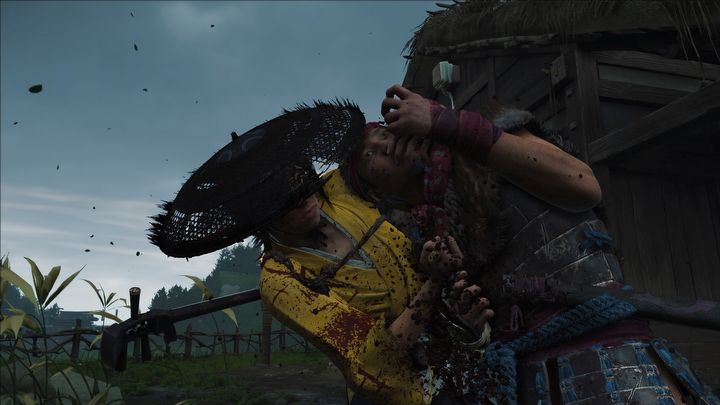
I’d like to circle back to the Ainu people, as they’re portrayed really well in the game. Bronislaw Pilsudski, a famous Polish ethnologist, actually did a lot of research on them. I was wondering if you used his work when developing the game? If not, could you tell me about how you approached researching the Ainu culture?
When researching the history of Hokkaido, it’s impossible to ignore the Ainu people, and our team quickly became fascinated with learning about their history and present-day lives. We were fortunate to have a researcher from Poland contribute to our understanding, but the most valuable part of our research was working directly with a member of the Ainu community and her family, who became our advisors. They invited us to Hokkaido, where a small team of us spent a day and a half with them, meeting in person and learning about their culture. We even went foraging for plants with them, preparing a meal together, and learning about their deep connection to the land and their heritage. They were incredibly generous with their time and knowledge, and lived near a museum they helped run. This experience was a powerful learning opportunity, and it motivated us to create something truly respectful and accurate. For months and years afterward, they continued to provide feedback on our scripts and gameplay, ensuring our depiction of the Ainu people was both engaging and thoughtful. Meeting them and building a personal connection made all the difference.
I’m really hoping they add a New Game Plus mode! As a big fan, I know a lot of us would absolutely love to replay the game with everything carried over. I’d be all over that, for sure!
So far, we’ve officially announced that we’re working on a new Legends mode, and we showed a trailer that our fans seem to love. We’re currently focused on polishing the final Yotei experience, making last-minute adjustments and fixes to ensure it’s the best game we’ve ever created. We’ll share more details soon.
- Our guide can help you explore Ezo on your own
Read More
- ETH PREDICTION. ETH cryptocurrency
- AI VTuber Neuro-Sama Just Obliterated Her Own Massive Twitch World Record
- Gold Rate Forecast
- Cantarella: Dominion of Qualia launches for PC via Steam in 2026
- Lynae Build In WuWa (Best Weapon & Echo In Wuthering Waves)
- ‘Suits’ Is Leaving Netflix at the End of December
- Hogwarts Legacy devs may have just revealed multiplayer for the sequel
- I’m So Excited That Street Fighter’s Wackiest Element Made It To The Movies
- Why I’m Really Skeptical About The Sequel To Devil Wears Prada
- Netflix’s Delhi Crime Is Almost Too Hard To Watch
2025-10-08 15:05